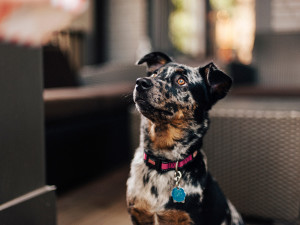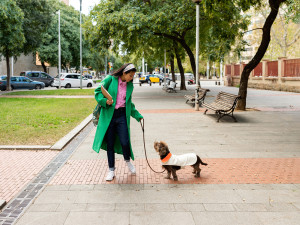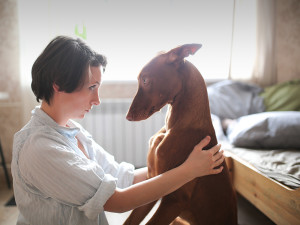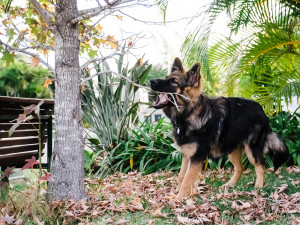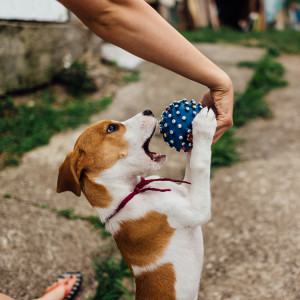My Dog Is Misbehaving. What Should I Do?
Don’t blame the dog — instead, figure out how to help them succeed.
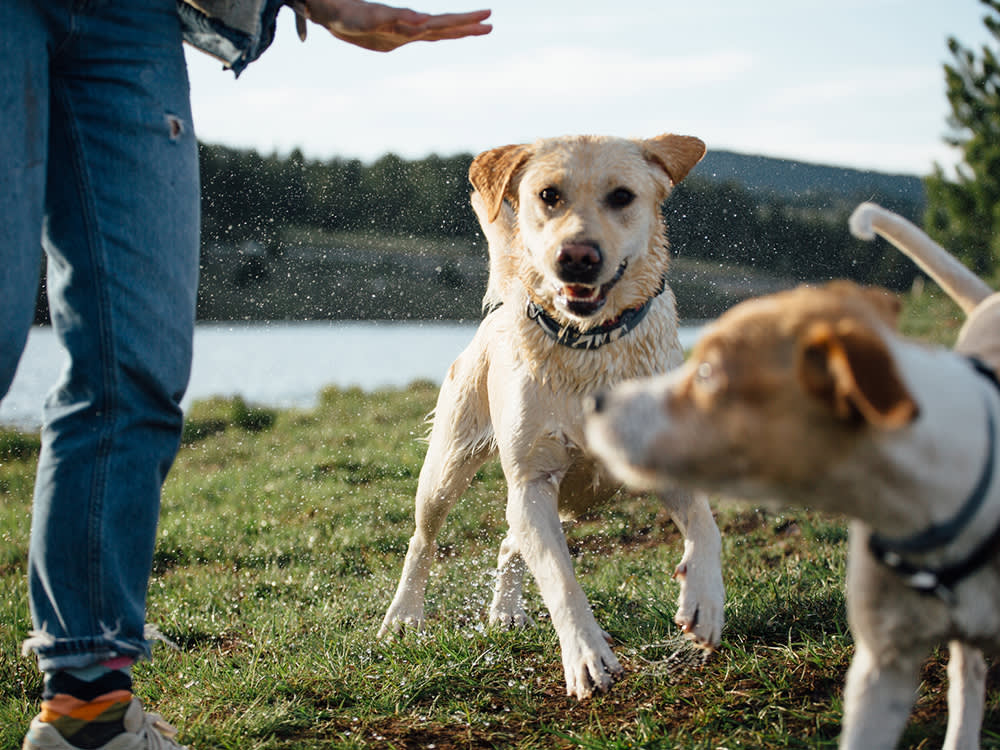
Share Article
When living or working with a dog who’s not doing what you want them to do, it’s natural to feel as though they’re intentionally misbehaving or causing trouble. You might even assume that the fault lies with the dog. But when you blame the dog, it will ultimately just impede progress towards your training goals. So, what should you do when a dog misbehaves?
Consider why your dog is misbehaving.
In my experience, dogs who aren’t doing what you ask need help (practice, information, or compassion), not correctionopens in a new tab (anger, disgust, or disappointment). The dog may not understand the cue given; they may not have had enough practice to do it reliably; they may be too distracted, stressed, or afraid.

Save on the litter with color-changing tech that helps you better care for your cat.
To figure out what the issue is, consider this: The dog is not giving you a hard time, but rather, they’re having a hard time. For whatever reason, they’re not doing as we ask because they can’t. Something is getting in their way, whether it’s their emotional state, their context, or because they haven’t had enough training to succeed. With that in mind, you need to ask yourself how you can help them accomplish the task at hand.
One of the first steps — and I don’t say this in an accusatory way — is to stop putting all the blame on the dog. Training a dog is a cooperative enterprise; we teach dogs how to behave, and they learn what to do when we make specific requests of them. By taking responsibility, you switch from the idea that your dog is “misbehaving” to the realization that you need to make it easier for your dog when they’re not succeeding.
What to do when your dog misbehaves.
With that in mind, here are the most common strategies professional dog trainers use to “fix” the problem of a dog who is not responding to commands. Each method requires accepting that it is the pet parent’s responsibility to help their dog so they can learn to do what is asked of them.
Build a stronger training base.
Start with the basics: do more training and use positive reinforcementopens in a new tab for all your training. If your dog resists going into a down, start making “down” their ticket to the good things in life. Ask them to lie down before you go for a walk, before you let them out, before you feed them, before you give them a new toy or a treat — you get the idea. Once they learn to associate lying down with whatever makes them happy, they will be more likely to lie down in new and different contexts.
Each time you reward a dog after performing the desired action, they’re more likely to do that same action again in the future because of positive reinforcement. By helping your dog make this connection a lot of times, you build a strong reinforcement history with a behavior, making it more likely that your dog will perform it.
Dogs, contrary to old-school ideas, don’t want to please us. They want to do what is pleasing to them. For that matter, individuals of every species, including our own, act in ways that cause good things to happen for them. Using positive reinforcement (and lots of it!) is the way to align what your dog wants to do with what you want them to do.
Set the dog up for success.
A fundamental principle of dog training is to repeatedly set your dog up for success. We can only reinforce the behavior we want if that behavior occurs, so we must increase the odds of the behavior happening. Creating situations in which the behavior is highly likely to occur and then reinforcing it makes it more likely to occur in the future. With lots of repetition in increasingly challenging situations, the dog will be able to perform the desired behavior in a broader range of contexts.
For example, suppose your dog barks and lunges whenever they see another dogopens in a new tab while out on a walk. How can you get them to act appropriately in this situation? The answer is to set them up for success by not putting them in situations they are guaranteed to fail. Instead, introduce them to situations where they’ll have a positive outcome and gradually increase the level of difficulty as they get better at dealing with it. What they can handle is a moving target, but it must be moved gradually.
Here’s one scenario: Enlist a friend with a calm dog (or even a stuffed dog if a real dog is too much of a challenge) to stand roughly a block away. After walking with your dog a few feet in their direction, ask them to turn and walk in another direction or to look at you. Then, break out the treats, praise, toys, or other reinforcement to reward them for doing what you ask. That’s a success, and you set them up for that success by staying at a distance from a stationary dog who would normally trigger their aggression if moving nearby. As they get better at this, make the situation slightly more challenging, perhaps by walking a little closer to the target dog or seeing a dog in the distance moving rather than standing still. Gradually increasing the difficulty and helping your dog to have multiple successes at each level is the best way to help your dog improve.
Use prevention and management.
When we manage a situation to prevent trouble, we are doing our dogs a big favor. Do you have a dog who doesn’t reliably come when called? Don’t let them off-leash in an area that is not fenced. They can’t handle that amount of freedom which will only lead to negative consequences:
They will ignore you when you call them to come.
They will learn that you can’t make them come or catch them.
They may put themselves in danger.
Long leashes and fences keep them from getting themself into trouble while they’re learning a solid recallopens in a new tab. Similarly, if they act in an out-of-control way when people come to the door, you can prevent that chaos by giving them a stuffed Kong or a chew toy to keep them occupied before visitors arrive, or have them on the other side of a gate to keep them from leaping on your guests. That’s managing the situationopens in a new tab to make it easier for them to do the right thing. The same goes for door darting dogs — it is your job to prevent your dog from escaping by using gates, leashes, or keeping the door closed. Prevent undesired behavior while you work on training your dog to have a better recall.
Building up skills with challenges.
There may be many reasons your dog isn’t doing what you want: the presence of distractions; a new context; a less-than-calm emotional state — scaredopens in a new tab, stressed, anxious, nervous, excited, agitated, or upset in some other way; an unclear cue; even discomfort or pain.
One secret of dog training is that teaching a dog to perform a behavior on cue is only the first step in truly training that dog. A large part of our efforts must go toward teaching the dog to do a cued behavior in a variety of situations and contexts. There’s a big difference between asking your dog to come when they’re in the backyard and to come when they’re running free through the neighborhood, or to roll over in the family room when nothing’s going on and to roll over immediately after entering the dog park when a dozen dogs have just swarmed them.
While this makes sense, it may be difficult to recognize more subtle challenges to a dog’s ability to respond as you wish, such as the scent of steaks on the neighbor’s grill, a storm in the distance, or a visitor watching as we try to show off our dog’s new trick. Other things like giving hand signals while wearing gloves or a thick winter coat may change the movements or cause anxiety making the dog incapable of concentrating on even simple tasks, such as sitting on request.
Once you recognize the possible reasons your dog is not doing what you want, you are far more likely to be able to solve the problem. If your dog is scared, you can help them overcome their fears, remove them from the situation that’s scaring them, or lower your expectations while they’re in that scary situation. You can help them move away from distractions or ask them to do something easier until you regain their full attentionopens in a new tab.
Blaming the dog will not change their behavior.
When you empathize with how hard it can be for your dog to learn all the skills you want them to have and to respond to your cues no matter what’s going on around them, or going on internally, you can more easily train them.
Try not to think of your dog as being stubborn or misbehaving — don’t complain that your dog has a mind of their own. Of course, they do. Dogs are independent beings. There’s no reason to expect that they’ll do what we want unless we give them a reason. We make that happen with prevention and management, by setting them up for success and using a lot of positive reinforcement, and looking for reasons they aren’t responding as we want them to.
Rather than describing a dog using the words “stubborn,” “rebellious,” “disobedient,” “ignoring,” “refusing,” or “misbehaving,” look for ways to turn things around. To achieve the goal of a better-trained dog, the shift must start in your mind, with a change in perspective.
Training will be more successful, and your dog’s behavior will improve when you recognize your role in the process. By correcting your own mistakes, you can have a dog who does as you ask. That makes your relationship better, your interactions more fun, and allows your dog to have more freedom.

Karen B. London, PhD, CAAB, CPDT-KA
Karen B. London, Ph.D., is a Certified Applied Animal Behaviorist and Certified Professional Dog Trainer who specializes in working with dogs with serious behavioral issues, including aggression, and has also trained other animals including cats, birds, snakes, and insects. She writes the animal column for the Arizona Daily Sun and is an Adjunct Professor in the Department of Biological Sciences at Northern Arizona University. She is the author of six books about training and behavior, including her most recent, Treat Everyone Like a Dog: How a Dog Trainer’s World View Can Improve Your Lifeopens in a new tab.
Related articles
![Trendy woman in a green coat walking her cute dog in a white jacket in public]() opens in a new tab
opens in a new tab6 Reasons to Set Boundaries for Your Dog
Well-trained dogs have more freedom (and more fun).
![Woman looks eye to eye at Pharaoh's dog on floor in bedroom]() opens in a new tab
opens in a new tab“How Can I Tame a Sassy Pup?”
Internationally renowned dog trainer Victoria Stilwell's tips for training pushy puppies.
![German Shepherd puppy pulling at a branch]() opens in a new tab
opens in a new tabDog Life Stages: Puppy Adolescence Is Only a Phase
What to expect when your perfect puppy hits that unruly stage.
![A dog reaching up to grab a blue ball out of a woman's hand.]() opens in a new tab
opens in a new tabPlaying With Dogs Improves Their Training Success
Post-training play may extend a dog’s memory of previously learned behaviors by up to a year.


